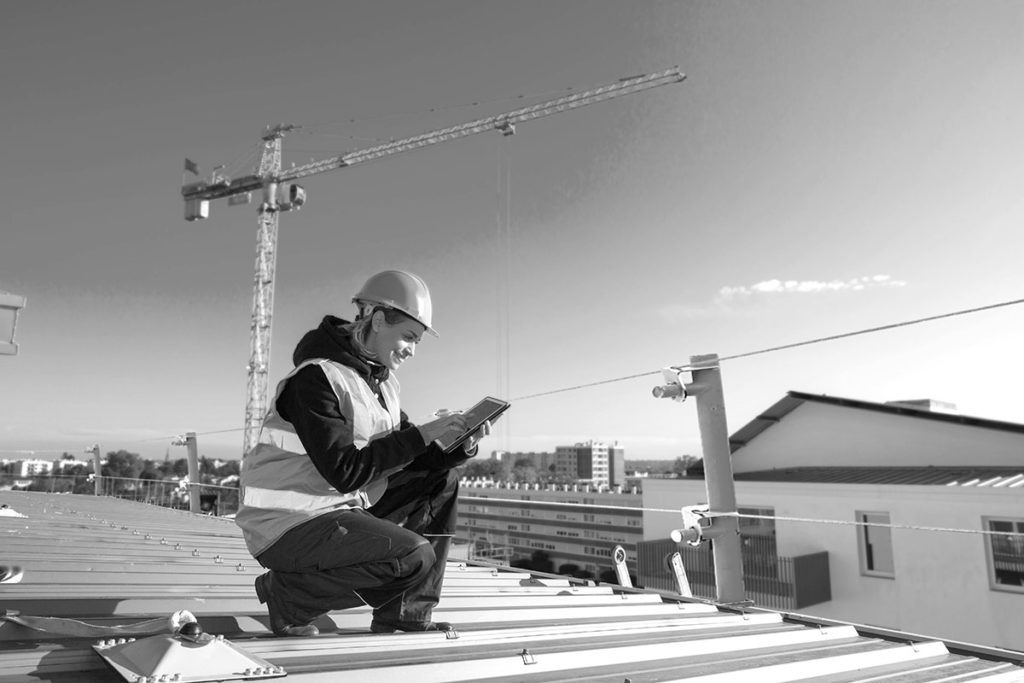The OSHA requirements for fall prevention include all platforms that are at a height that is four feet or greater than the adjacent surface. Needless to say, that includes practically every rooftop in America and every worker that needs to be on that rooftop at some time.
The options for protecting workers on rooftops are numerous ranging from PPE (personal protection equipment) to permanent barriers. Each has its advantages, but choosing the best solution begins with a proper assessment of the rooftop and the risks against which you are striving to protect. Here a list of the questions that we ask every prospective customer and the likely outcome from the answers provided.
- Who goes on your roof?
The most frequent answers are employees, contracted workers, or the general public. Your answer here determines what you need to do next.
If the general public accesses your roof, you need to refer to local building codes to understand what restraints and/or barriers are required for their protection. These requirements are more stringent than the OSHA codes because you are protecting untrained individuals who may be near the roof edge in concentrated numbers. Examples include: rooftop restaurants and pedestrian walkways. Substantial barriers or railing systems are then needed to protect people in these exposures.
If you answered “employees” or “contracted workers”, then you are held to the requirements of the federal OSHA code, or a specifically modified state or local version of the federal code, if one exists. This requires you to choose from either PPE or passive fall prevention systems like rails and gates. PPE is less expensive but it does require properly fitted gear, training in its use, qualified tie-off points, and a rescue plan in the event someone does fall. Passive fall prevention systems are more expensive but it also far more foolproof. No specific training or rescue plan development is required. There is no concern for proper implementation by the individuals working on the rooftop, and workers are able to move unimpeded because they are not tied off.
- Why do people need to go on your roof?
The most common answer is “to perform maintenance functions” such as servicing HVAC units, repairing solar panels, repairing lights, servicing security cameras, cleaning drains, or changing filters. The travel patterns of employees and workers determine where protection is required and the type of protection that makes the most sense as they move to and from the work areas on your roof. Although protecting the entire rooftop perimeter is the most complete answer to rooftop fall protection, it may not be necessary or even advisable at times.
- How often do people go on your roof?
If you answered “quarterly”, or more frequently than quarterly, you are likely to come under a heavier level of scrutiny. You also have a greater risk that should be addressed. Frequency of use not only means repeated exposures but it also can result in a creeping level of complacency in the people going on your roof. Repetition can breed complacency which, in turn, can become carelessness. It is the same phenomena results in most traffic accidents occurring within close proximity to a person’s home.
- Do people work within 15 feet of the edge of your roof?
Although many OSHA officials will respond there is no safe distance from the leading edge on a roof, frequented areas within 15 feet of the leading edge will most certainly receive the greatest attention and pose the greatest risk. The general rule of thumb with passive fall prevention systems is to use hard barriers (rails) to protect workers operating within 15 feet of the edge and warning lines to keep workers from accessing those areas that are within 15 feet of the edge.
- How do people access your roof?
Rooftop access is generally gained through one of three means: a stairwell, an exterior ladder, or a roof hatch. A stairwell is not a fall hazard, but the other two are. Both are addressed by OSHA code. Providing safe passage to and from these hazard areas is a key part of any rooftop safety plan.
Every rooftop, however, is different in its configuration, usage and fall protection requirements. The best solutions address these elements uniquely but all can be resolved by someone with the proper level of knowledge. If you’re interested in receiving our assistance, just contact us for a no obligation free assessment.
Garlock Safety Systems has been in the business of protecting workers at height for over 30 years.
